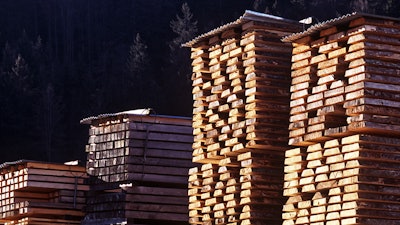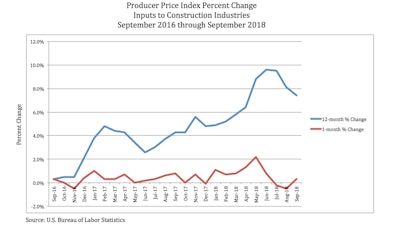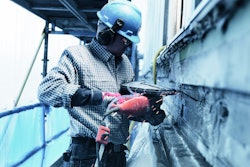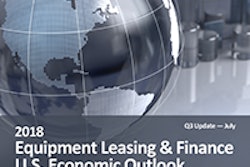
Prices for inputs to construction rose 0.3% in September and are 7.4% higher than a year ago, according to an Associated Builders and Contractors analysis of U.S. Bureau of Labor Statistics data. Overall prices for nonresidential construction inputs rose 0.4%, reversing last month’s downward trend. Among individual subcategories, softwood lumber prices are down 0.4% yet are up 5.4% on a year-over-year basis. Crude petroleum and natural gas prices are both up on a monthly basis, 8.7% and 1.1%, respectively.

“There is also the matter of trade tensions,” said Basu, “including those involving key construction materials like steel and softwood lumber. While new trade agreements have been signed with the likes of Mexico, South Korea and Canada, certain trade issues linger, including U.S. tariffs imposed on foreign steel and aluminum for reasons ostensibly related to national security. All of this is consistent with both elevated and rising construction materials prices.
 Associated Builders and Contractors
Associated Builders and Contractors
“Today’s data are consistent with the view that the prior month’s data were anomalous,” said Basu. “Nonresidential contractors should continue to expect both rising material and human capital costs going forward. Understanding these dynamics is, of course, particularly salient to the daily lives of estimators, who arguably have today’s most difficult construction job.”



















